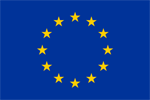Innovative Educational Technologies, Tools and Methods for E-learning
Scientific Editor Eugenia Smyrnova-Trybulska
“E-learning”, 12, Katowice–Cieszyn 2020, pp. 257–267
DOI: 10.34916/el.2020.12.22
AN APPROACH TO TEACHING ARTIFICIAL INTELLIGENCE IN SCHOOL
Todorka Glushkova-1, Stanimir Stoyanov-2, Veneta Tabakova-Komsalova-3, Maria Grancharova-Hristova-4, Irina Krasteva-5, Plovdiv University “Paisii Hilendarski”, 4000 Plovdiv, 24 “Tzar Asen” str., Bulgaria, 1, glushkova@uni-plovdiv.bg, 2, stani@uni-plovdiv.net, 3, veni_tab@abv.bg, 4, m.grancharova@ghp-plovdiv.org, 5, krasteva@uni-plovdiv.bg, ORCID 1, 0000-0002-6243-9364, 2, 0000-0002-3854-4260, 3, 0000-0002-0617-9844, 4, 0000-0003-4083-6202, 5, 0000-0003-0842-8143
Abstract: New realities in the digital age determine the comprehensive and rapid penetration of artificial intelligence in all areas of contemporary life. The article motivates the need to introduce the discipline “Artificial Intelligence” in high school and proposes an approach to the practical realization of this training. The possibility for development of a possible curriculum, selection and structuring of appropriate educational content, classification and creation of a package of learning tasks on the separate topics and sections in the curriculum are discussed. Opportunities are offered for the implementation of links with other school subjects, as well as with the everyday life of students. In the last two years, AI has been studied in various forms by more than 200 students from several experimental schools. The interest and motivation of students is constantly growing. Based on the experience gained and the results obtained, we can say that the discipline of AI can be successfully introduced in different degree, in different forms and in different volumes in the school education in Bulgaria.
Keywords: Artificial Intelligence (AI), Logic Programming, School Education.
REFERENCES
C h a m o s o, P., G o n z á l e z – B r i o n e s, A., R o d r í g u e z, S., & C o r c h a d o, J. M. (2018). Tendencies of technologies and platforms in smart cities: A state-of-the-art review. Wireless Communications and Mobile Computing. Vol. 2018, 1–17. DOI: 10.1155/2018/3086854.
D r i g a s, A. S. & I o a n n i d o u, R. E. (2013). A Review on Artificial Intelligence in Special Education. In A. Ghosh (Ed.). Communications in Computer and Information Science book series. Vol. 278, Springer. DOI: 10.1007/978-3-642-35879-1_46.
F a h i m i r a d, M. & S e d i g h e h S h a k i b K o t a m j a n i (2018). A Review on Application of Artificial Intelligence in Teaching and Learning in Educational Contexts, International Journal of Learning and Development, 8(4). DOI: 10.5296/ijld.v8i4.14057.
G l u s h k o v a, T. & S t o y a n o v, S. (2019). Artificial Intelligence in Secondary School, Education and Technologies, 10/2019(1). DOI: 10.26883/2010.191.1470.
J o n e s, M. (1985), Applications of artificial intelligence within education, Computers & Mathematics with Applications, 11(5), 517–526. DOI: 10.1016/0898-1221(85)90054-9.
K o m n i n o s, S. & S t a m o u, S. (2006). HealthPal: An intelligent personal medical assistant for supporting the self-monitoring of healthcare in the ageing society, Proceedings from the 4th Int.Workshop Ubiquitous Comput. Pervasive Healthcare Appl., Sept. 17–21, USA.
R u s s e l l, S. & N o r v i c, P. (2016). Artificial Intelligence: A Modern Approach, Pearson publ., 1132 pages. DOI: 10.1016/j.artint.2011.01.005.
S c h w a b, K. (2016). The Fourth Industrial Revolution, Crown Business, USA.
X i n G e n g & B y e o n g – H o K a n g (Eds.) (2018). Trends in Artificial Intelligence: Proceedings from the 15th Pacific Rim International Conference on Artificial Intelligence, Nanjing, China, August 28–31, Springer, 524.





